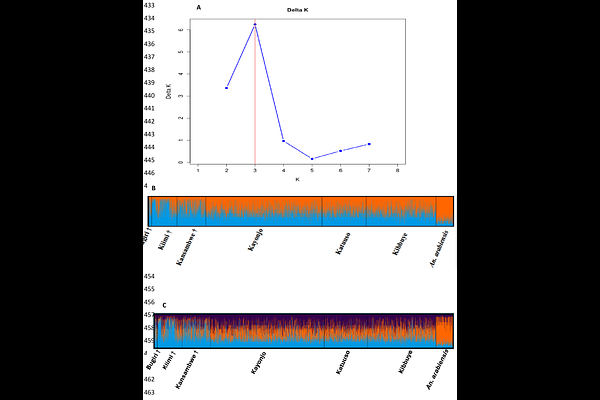Assessing the population genetic structure and demographic history of Anopheles gambiae and Anopheles arabiensis at island and mainland populations in Uganda: Implications for testing novel malaria vector control approaches.

Assessing the population genetic structure and demographic history of Anopheles gambiae and Anopheles arabiensis at island and mainland populations in Uganda: Implications for testing novel malaria vector control approaches.
Mwima, R.; Hui, T.-Y. J.; Lukyamuzi, E.; Bodde, M.; Makunin, A.; Birungi, K.; Lukindu, M.; Nanteza, A.; Muhanguzi, D.; Lawniczak, M.; Burt, A.; Kayondo, J.
AbstractEven with enormous effort put into malaria control, it remains a global burden, disproportionately affecting people residing in areas such as Uganda and many other countries in sub-Saharan Africa. Innovative tools for malaria control are being developed, such as a gene drive system to suppress the vectors\' populations, requiring knowledge of the population genetics of malaria vectors, including their population structure, size and genetic diversity to ensure effective and targeted implementation. This study collected 2918 Anopheles gambiae and 173 Anopheles arabiensis across six populations from both the islands on Lake Victoria and mainland Uganda for amplicon sequencing. Large pairwise FST values were observed between the two species, indicating their divergence. We observed low but often significant FST values between the 6 An. gambiae populations, while between the An. arabiensis mainland populations, FST values were not significant. Principal Component Analysis also revealed strong genetic structure between the two species but did not provide a clear picture between populations within a each species. We also found that mainland An. gambiae populations had higher within-population genetic diversity than the islands\', while An. arabiensis had the lowest nucleotide diversity. Tajima\'s D values were all negative, suggesting a recent population expansion. The islands An. gambiae populations had very low contemporary effective population sizes in the tens and hundreds, as estimated from linkage disequilibrium, while the mainland population sizes were consistently higher, in the thousands. This study revealed that there is significant genetic differentiation between An. gambiae and An. arabiensis, as well as between island and mainland populations of An. gambiae, with mainland populations showing higher connectivity and island populations exhibiting greater isolation. In contrast, An. arabiensis mainland populations displayed no significant differentiation, suggesting panmixia. These findings thus highlight the influence of geographic and ecological factors on population structure and provide critical insights for selecting candidate sites and designing field trials for genetic-based malaria control strategies.